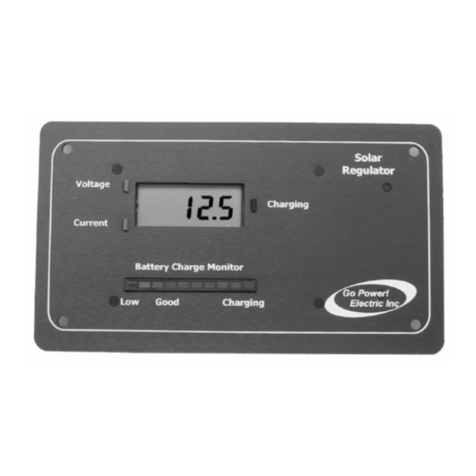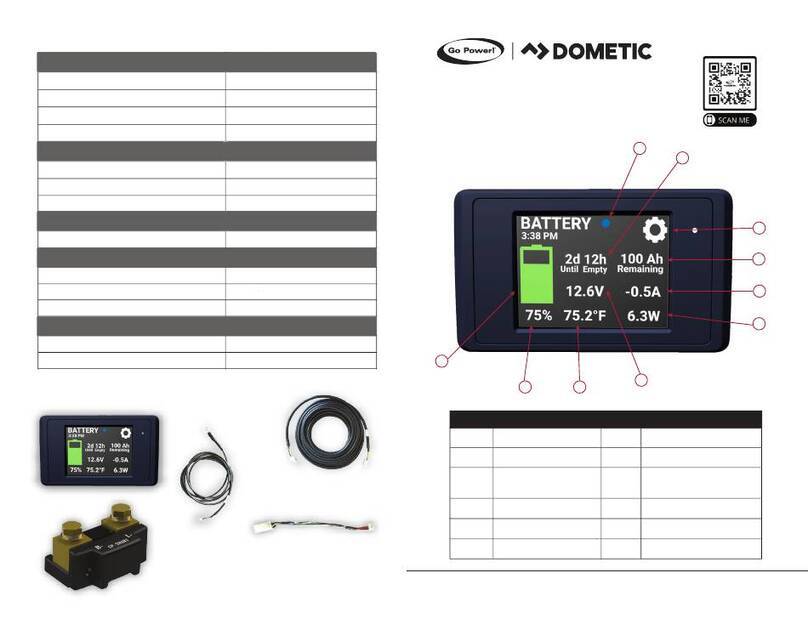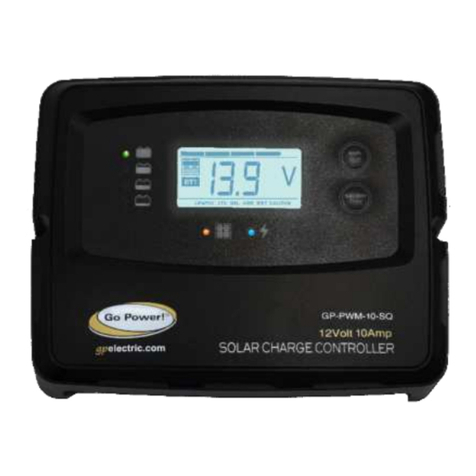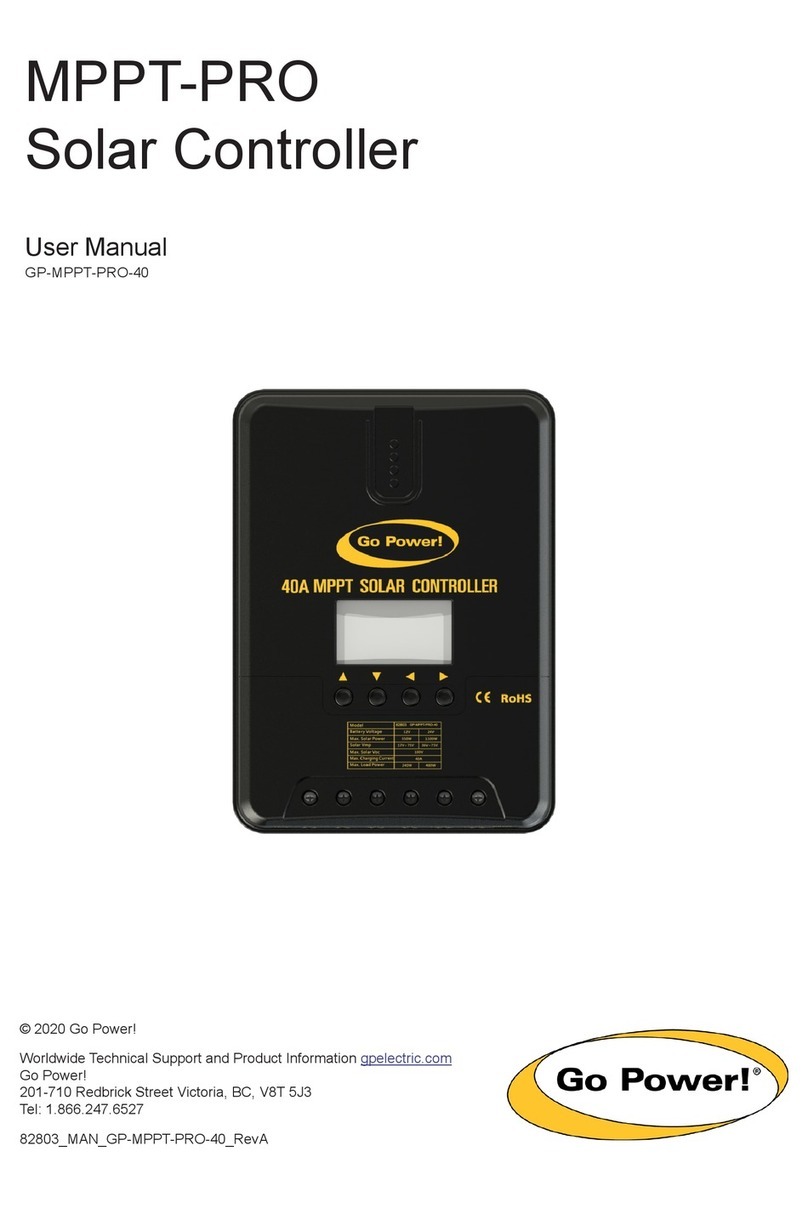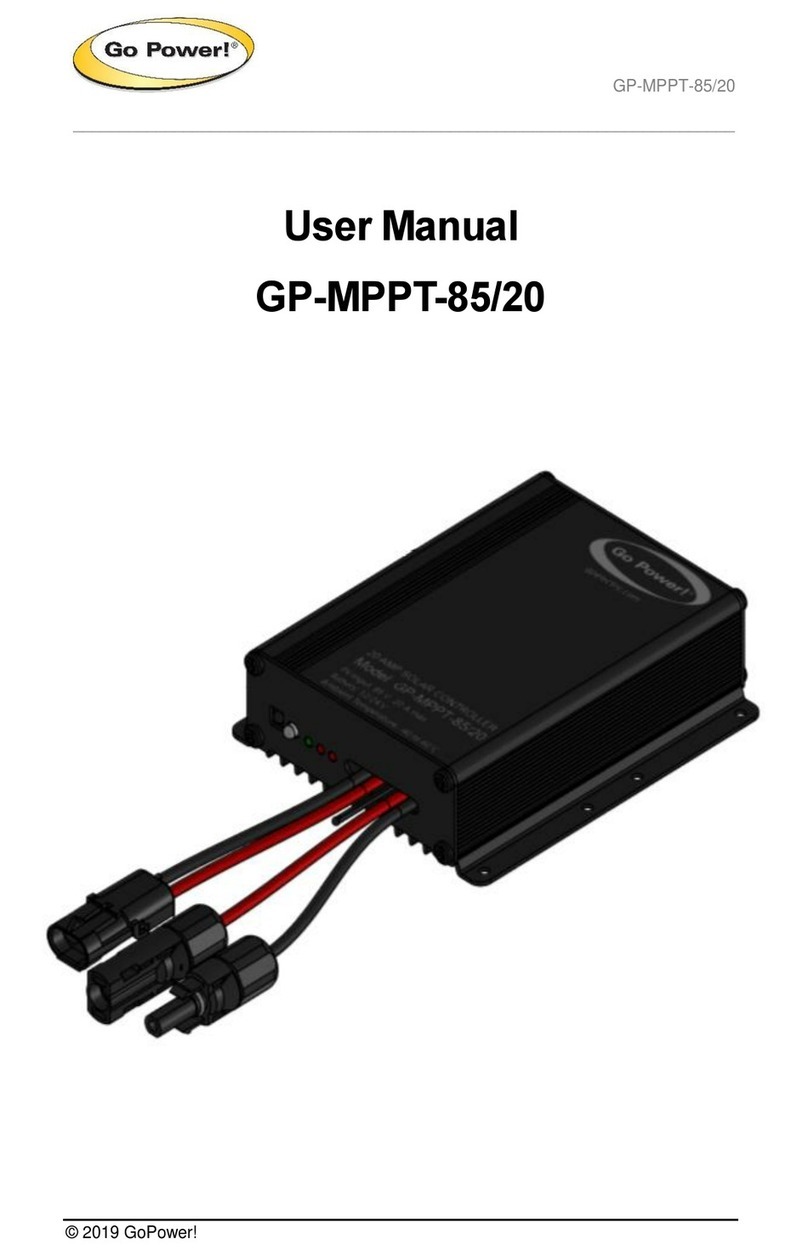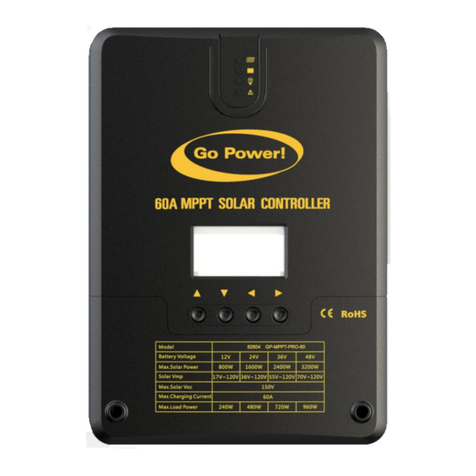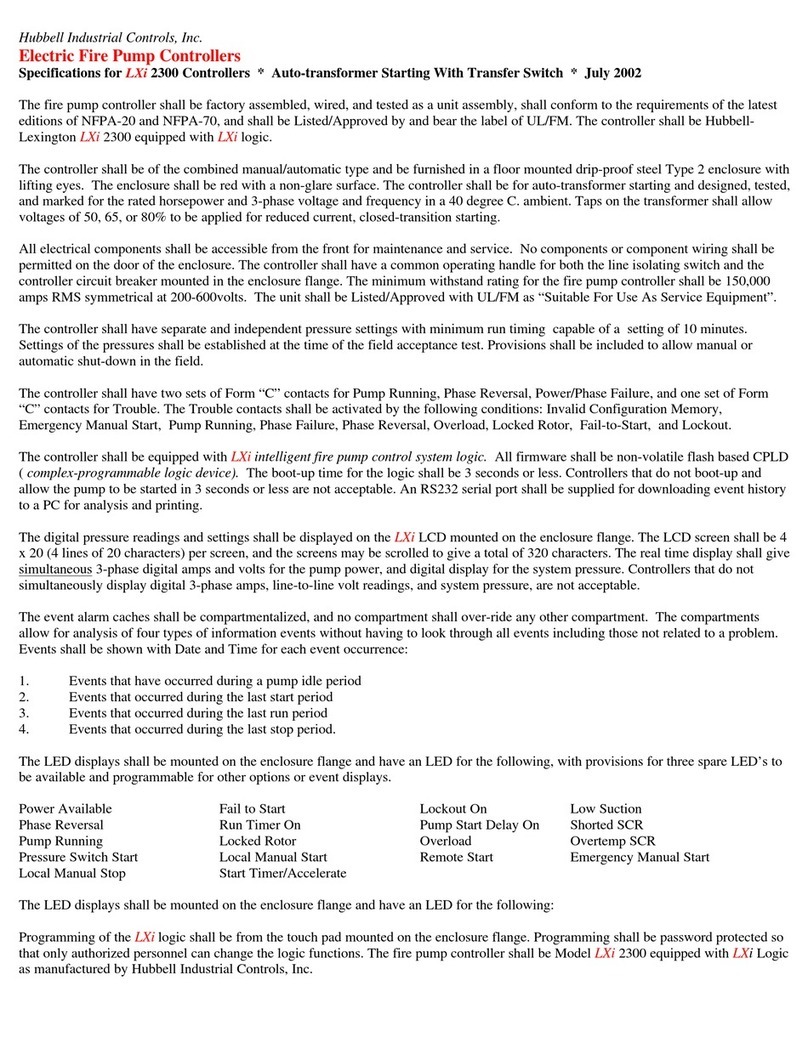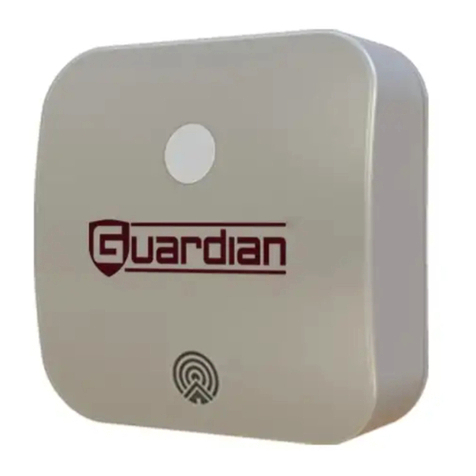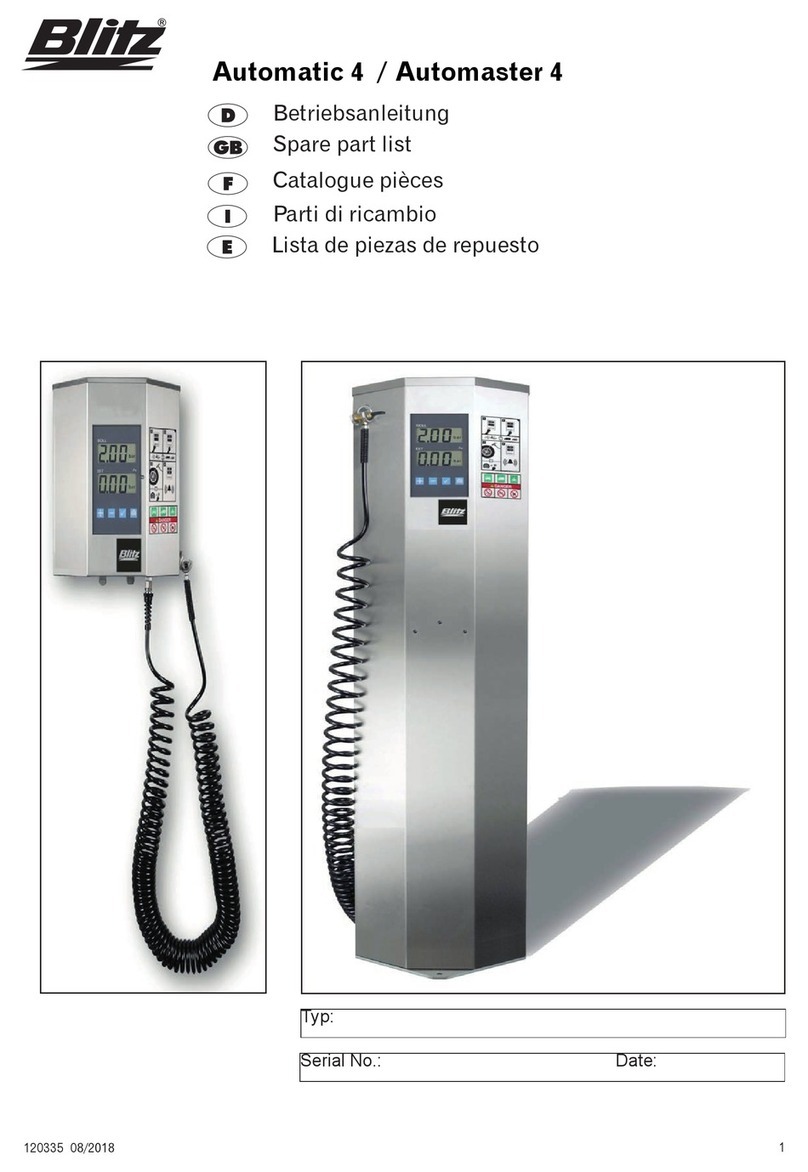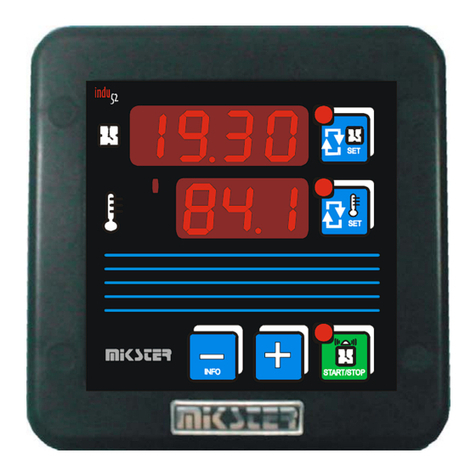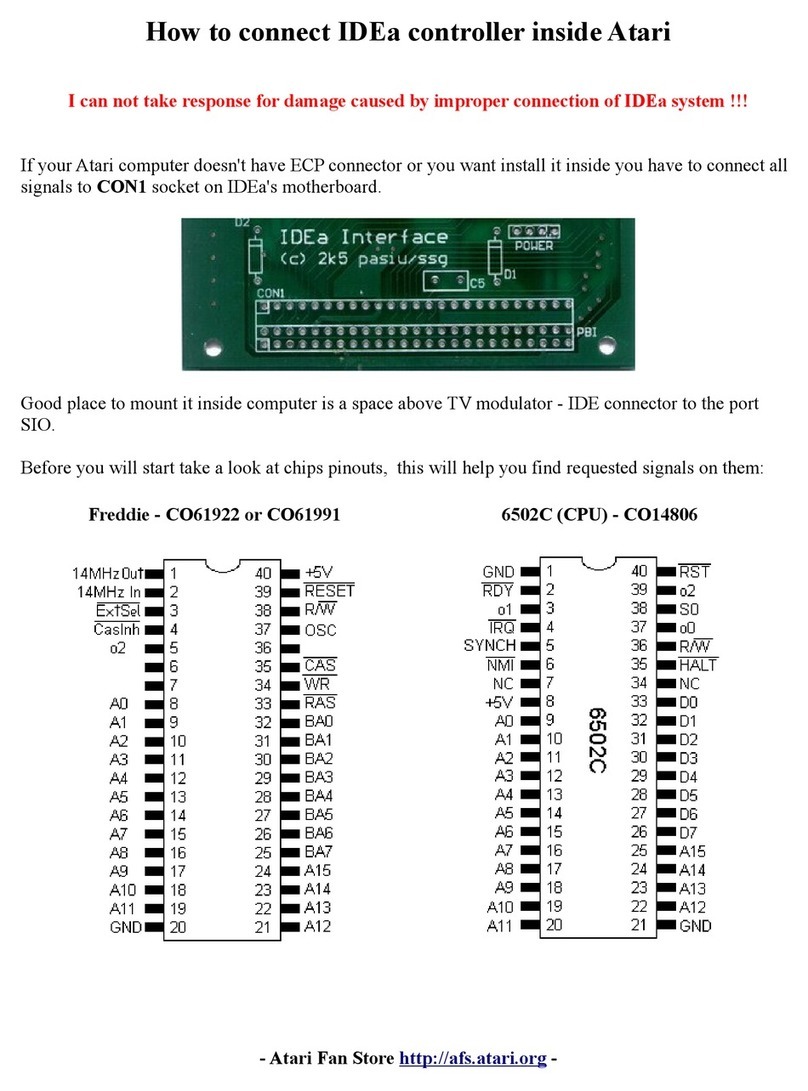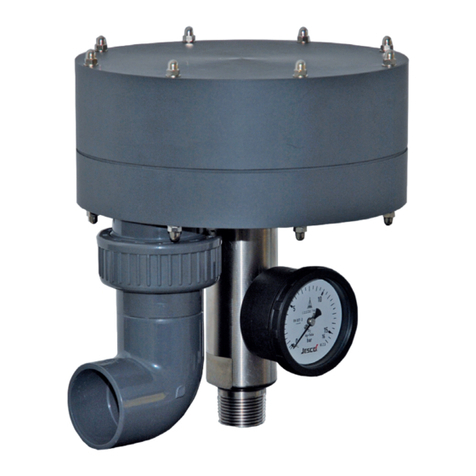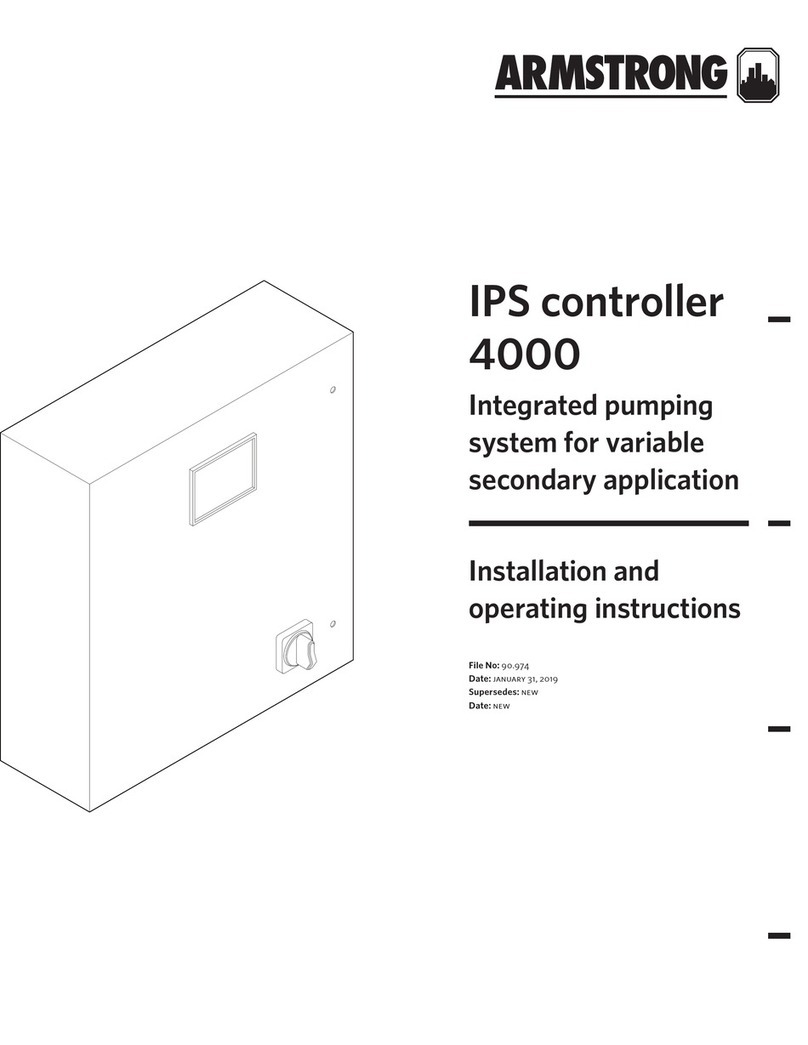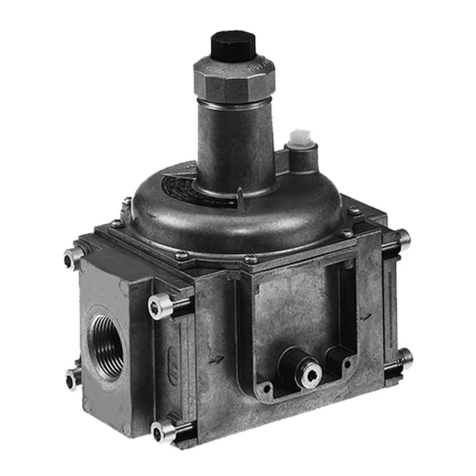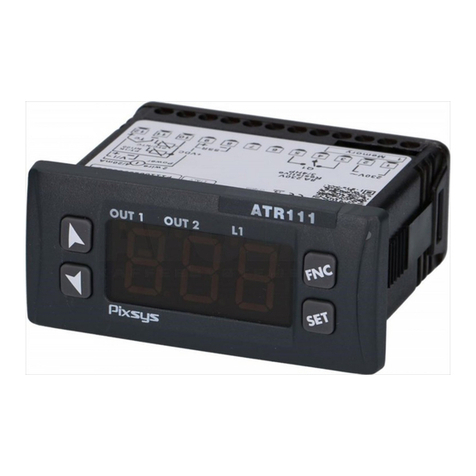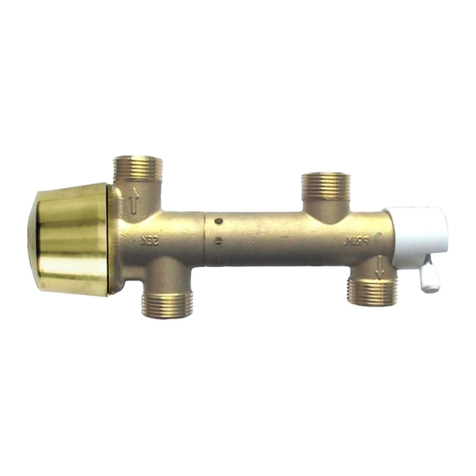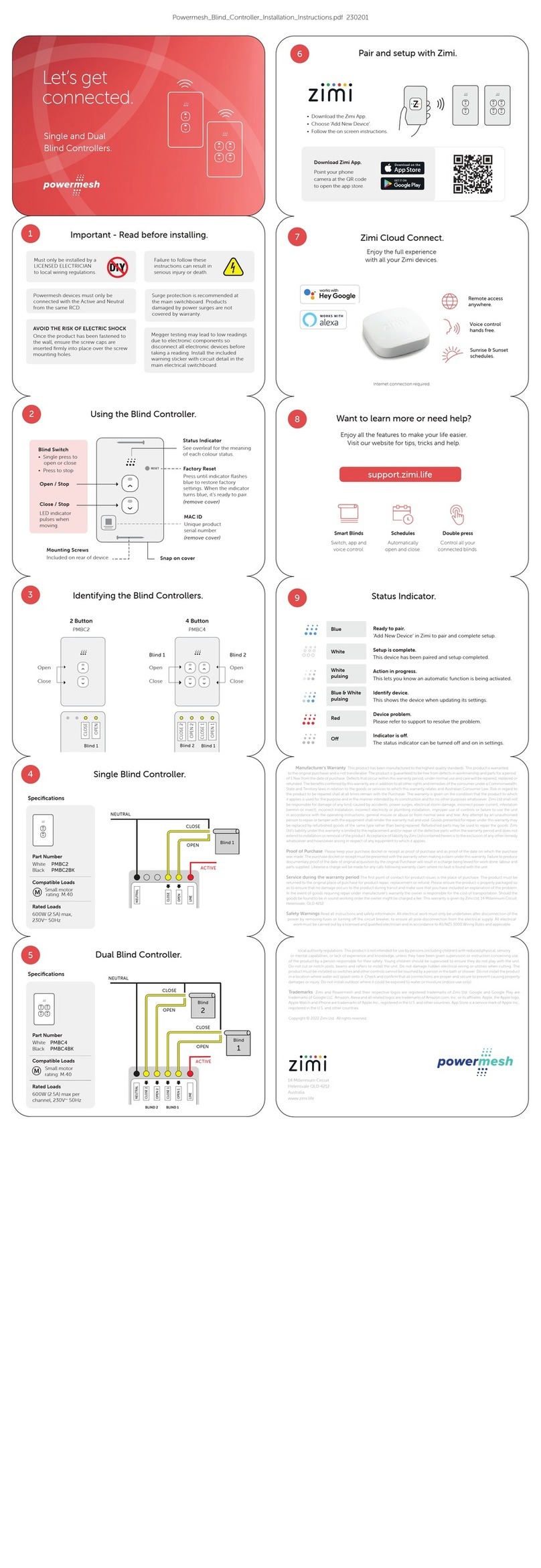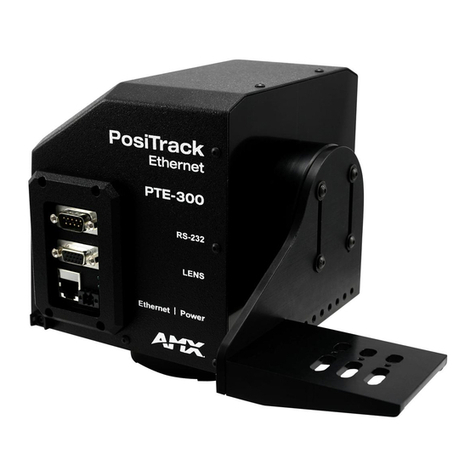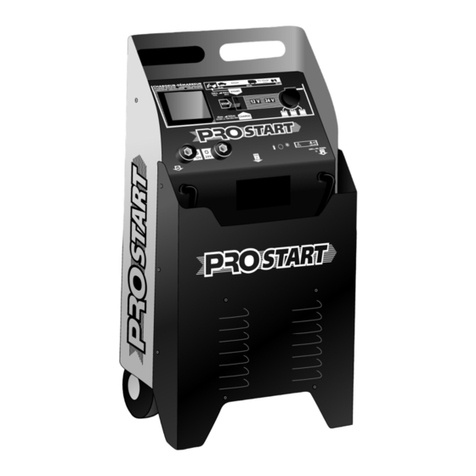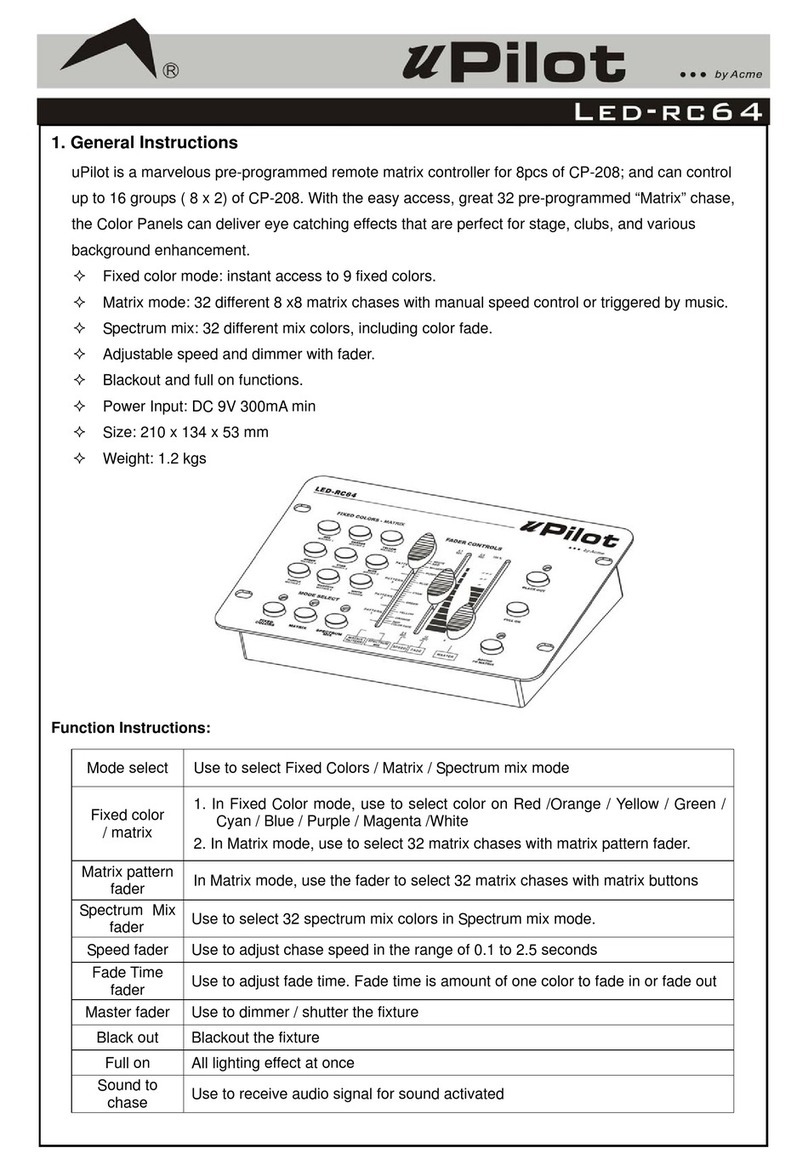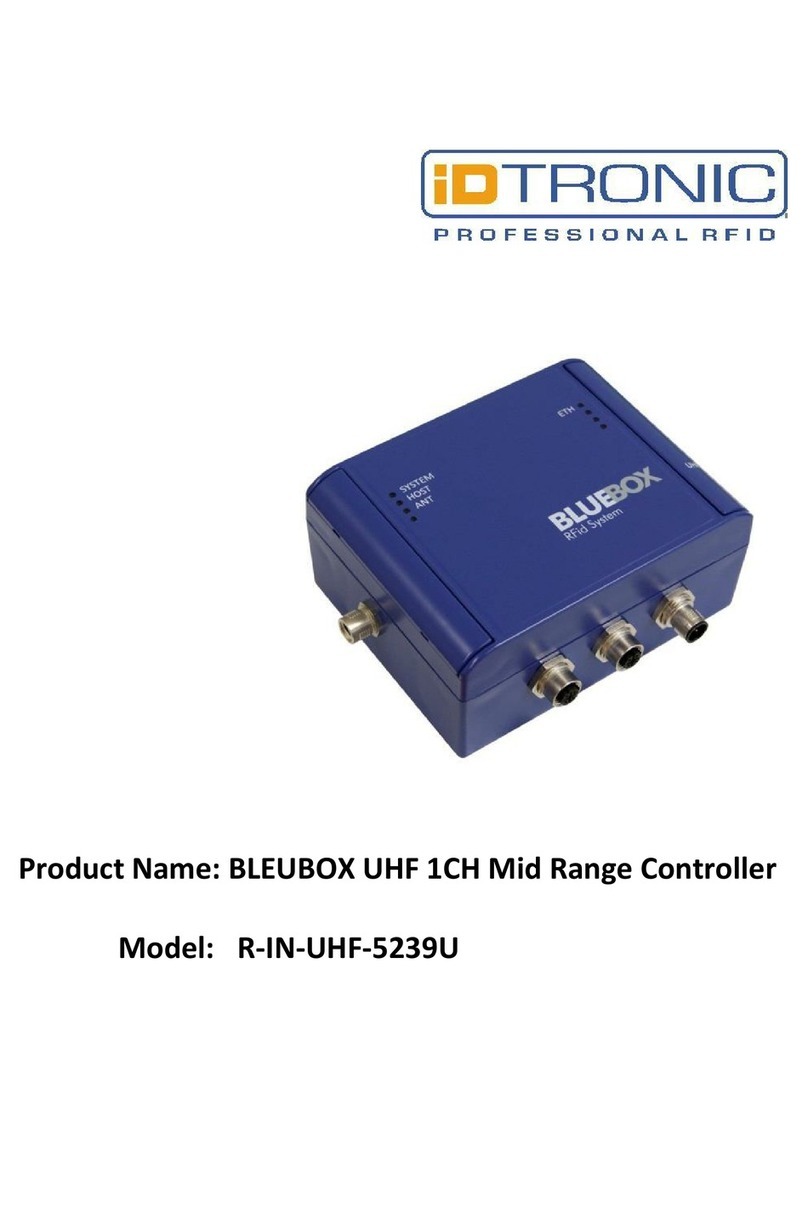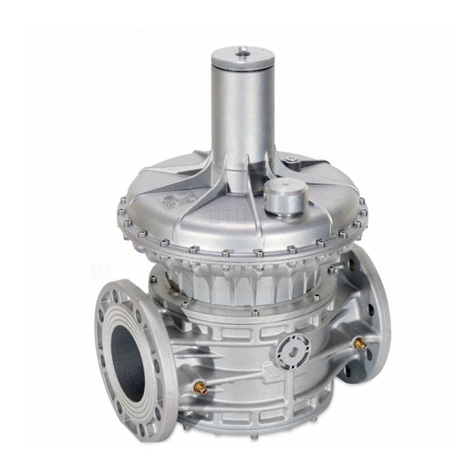Go Power GP-PWM-10 User manual

GP-PWM-10
1
Owner’s Manual
Contents
1.0 Installation Overview..........................................................................................................2
2.0 Warnings............................................................................................................................2
3.0 Choosing a Location...........................................................................................................3
4.0 Installation Instructions.......................................................................................................3
5.0 Operating Instructions ........................................................................................................ 4
6.0 Frequently Asked Questions (FAQs).................................................................................. 5
7.0 Troubleshooting ................................................................................................................. 6
8.0 General Warranty...............................................................................................................7
9.0 Wiring Diagram ..................................................................................................................8
GP-PWM-10

GP-PWM-10
2
1.0 Installation Overview
1.1 Introduction
A Solar Controller (or Charge Controller / Regulator) maintains the life of the battery by
protecting it from overcharging. When your battery has reached a 100% state of charge, the
controller prevents overcharging by limiting the current flowing into the batteries from your solar
array. The GP-PWM-10 is rated for a continuous solar current input of 10 amps, uses Pulse
Width Modulation (PWM) technology and a unique four stage charging system that includes an
optional equalize setting to charge and protect your battery bank.
1.2 Specifications
Description
Value
Dimensions (H x W x D):
102 x 130 x 27 mm
4.02 x 5.12 x 1.06 in
Weight: 151 grams / 5.34 oz
Maximum Wire Gauge: #6 AWG
Warranty: 1 year
•PWM charging
•4 Battery charging profiles
•4 Stage charging
•Monthly equalize option
•Displays charging current,
Battery voltage and battery
state of charge
•Reverse polarity protected
•Temperature compensated
•RoHS compliant
•Accepts up to 10 Amps DC
Input Current
The total rated Maximum Power
Current (Imp) of the PV input
should not exceed 10 Amps
Nominal System Voltage
12V
Max. Solar Array Current
10 amps
Battery Voltage Range
6V – 15.5V
Max. Solar Voltage
25V
Bulk / Charge Voltage
10 – 14 V
Absorption Charge (Gel/AGM/WET)
(14.1 / 14.4 / 14.7)
(25 °C / 77 °F), 1 - 2h / day
Float Voltage
13.6 (25 °C / 77 °F)
Equalization Voltage
15.5V (25 °C / 77 °F),
2h / 28 day or V < 12.1
Temperature Compensation
- 24mV / cell*K
Operating / Display Operating Temp.
- 20 to 50 °C / - 13 to 122 °F
Storage Operating Temp.
- 40 to 85 °C / - 40 to 185 °F
Humidity
100% N.C.
Protection
Battery reverse polarity, solar array reverse polarity, over temp.,
PV short circuit, over current
2.0 Warnings
Disconnect all
power sources Electricity can be very dangerous. Installation should be performed only
by a licensed electrician or qualified personnel.
Battery and wiring
safety
Observe all safety precautions of the battery manufacturer when
handling or working around batteries. When charging, batteries produce
hydrogen gas, which is highly explosive.
Wiring connections
Ensure all connections are tight and secure. Loose connections may
generate sparks and heat. Be sure to check connections one week after
installation to ensure they are still tight.
Work safely
Wear protective eyewear and appropriate clothing during installation.
Use extreme caution when working with electricity and when handling
and working around batteries.
Observe correct
polarity
Reverse polarity of the battery terminals will cause the controller to give
a warning tone. Reverse connection of the array will not cause an alarm
but the controller will not function. Failure to correct this fault could
damage the controller.
Do not exceed the
GP-PWM-10 Amp
current and max
voltage ratings
The current rating of the solar system is the sum of the Maximum Power
Current (Imp) of the solar PV strings in parallel. The resulting system
Imp current is not to exceed 10A. The voltage of the array is the rated
open circuit voltage (Voc) of the PV array and is not to exceed 28V. If
your solar system exceeds these ratings, contact your dealer for a
suitable controller alternative.

GP-PWM-10
3
3.0 Choosing a Location
The GP-PWM-10 is designed to be mounted against a wall, out of the way but easily visible. The
GP-PWM-10 should be:
•Mounted as close to the battery as possible
•Mounted on a vertical surface to optimize cooling of the unit
•Indoors, protected from the weather
Solar should connect directly to the controller. Positive and negative battery connections must
connect directly from the controller to the batteries. Use of a positive or negative distribution bus
is allowed between the controller and battery as long as it is properly sized, electrically safe and
an adequate wire size is maintained. Note:In a RV, the most common controller location is
above the refrigerator. The wire from the solar array most commonly enters the RV through the
fridge vent on the roof.
4.0 Installation Instructions
1. Select wire type and gauge. If this GP-PWM-10 was purchased as part of a Go
Power! Solar Power Kit, appropriate wire type, gauge and length is provided. Please
continue to Section 5, “Operating Instructions.” If the GP-PWM-10 was purchased
separately, follow the instructions included here. Wire type is recommended to be a
stranded aluminum UV resistant wire. Wire fatigue and the likelihood of a loose
connection are greatly reduced in stranded wire compared to solid wire. Wire gauge
should be able to sustain rated current as well as minimizing voltage drop.
Suggested Min. Wire Gauge (Cable 25 ft. max. from solar array to battery bank)
80 Watt #12 Wire Gauge For other applications, please
refer to standard wire guide.
95 Watt
#10 Wire Gauge
160 Watt
#10 Wire Gauge
Identify the polarity (pos. and neg.) on the cable used for the battery and solar
module. Use colored wires or mark the wire ends with tags. Although the GP-PWM-
10 is protected, a reverse polarity contact may damage the unit
2. Wiring the GP-PWM-10. Wire the -PWM-10 according to the wiring schematic in
Section 9. Run wires from the solar array and the batteries to the location of the GP-
PWM-10. Keep the solar array covered with an opaque material until all wiring is
completed. Torque all terminal screws to 16 inch pounds (1.8N.m). Connect the
battery wiring to the controller first and then connect the battery wiring to the battery.
Use appropriate circuit protection on any conductor attached to a battery.
With battery power attached, the controller should power up and display information. Connect
the solar wiring to the controller and remove the opaque material from the solar array. The
negative solar array and battery wiring must be connected directly to the controller for proper
operation. Do not connect the negative solar array or negative battery controller wiring to the
chassis of the vehicle.
3. Mounting the GP-PWM-10. Mount the GP-PWM-10 to the wall using the included two
mounting screws. After 30 days of operation, re-torque all terminal screws to ensure
the wires are properly secured to the controller. Congratulations, your GP-PWM-10
should now be operational. If the battery power is low and the solar array is producing
power, your battery should begin to charge.
You must set the battery type on the GP-PWM-10 before you begin to use the
controller. See section 5.2

GP-PWM-10
4
5.0 Operating Instructions
5.1 Power Up
Please check your battery manufacturer’s specifications to select correct battery type. The unit
provides 4 battery types for selections: Gel, AGM, WET (conventional lead acid), and Calcium.
5.2 Setting the Battery Type / Charging Profile
Press BATTERY TYPE button and hold for 3 seconds to go into
your battery type selection mode, the battery type you select will
be shown on the LCD meter. The controller will automatically
memorize your battery type setting.
Incorrect battery type setting may damage your battery.
When the controller powers on, the unit will run self-test mode and automatically show below
items on LCD before going into charging process. Refer to the Battery Charge Profile Chart on
for details on each profile.
Self-test starts, digital
meter segments test
Software version test
Rated voltage
Current test
After going into charging process, the LCD displays the charging states as below. Press VOLT /
AMP button in sequence, the LCD will display in turn with Battery Voltage, Charging Current,
Charged capacity (Amp-hour) and Battery Temperature (if external temperature sensor
connected).
Battery Charge Profile Chart
The 6 LED’s indicate the
charging status and the battery
condition
RED
BLUE
GREEN
GREEN
YELLOW
RED
Solar Power Present- No
battery connected
ON OFF OFF OFF OFF Flash
Soft charging
ON
Flash
OFF
OFF
OFF
ON
Bulk charging
ON
ON
OFF
Subject to battery voltage
Absorption charging
ON
ON
OFF
ON
OFF
OFF
Equalization charging
ON
ON
OFF
ON
OFF
OFF
Float charging
ON
OFF
ON
OFF
OFF
OFF
Solar panel weak
Flash
OFF
OFF
Subject to battery voltage
At night no charge
OFF
OFF
OFF
Subject to battery voltage
Battery Voltage below 11.5V (+/-
0.2V)
ON ON OFF OFF OFF ON
Battery Voltage between
11.5V - 12.5V(+/-0.2V)
ON ON OFF OFF ON OFF
Battery Voltage above 12.5V (+/-
0.2V)
ON ON OFF ON OFF OFF

GP-PWM-10
5
Wet Cell Battery Charging Algorithm Auto Equalize: The GP-
PWM-10 has an automatic
equalize feature that will
charge and recondition your
batteries once a month at a
higher voltage to ensure that
any excess sulfation is
removed. This feature is recommended for Flooded batteries only. Check with your battery
manufacturer. This feature is only available for wet cell or flooded batteries.
Soft Charge- When batteries suffer an over-discharge, the controller will softly ramp the battery
voltage up to 10V.
Bulk Charge-Maximum current charging until batteries rise to Absorption level
Absorption Charge-Constant voltage charging and battery is over 85%
Equalization Charge*- Only for WET battery (Flooded lead acid) or Calcium battery type, when
the battery is deeply drained below 10V, it will automatically run this stage to bring the internal
cells as an equal states and fully complement the loss of capacity. (Gel and AGM battery do not
run Equalization charge)
Float Charge-Battery is fully charged and maintained at a safe level. A fully charged battery has
a voltage of more than 13.6 Volts.
Viewing the Controller display information
Solar Panel Abnormal Mode
LCD
display
LED indication LCD backlight
Solar panel weak
Flash
ON
Solar panel reverse connection
Flash Flash
Solar panel over voltage (> 26.5V)
Flash Flash
Battery Abnormal
Mode
LCD
display
LED indication LCD backlight
Battery disconnected
or less than 3.0V
Flash
Flash
Flash Flash
Battery reverse
connection
Flash Flash
Battery over voltage
than > 17.5V Flash Flash
Battery temperature
over 65C
Flash
Flash
Flash Flash
Solar Controller Abnormal Mode
LCD Display
LED indication
LCD backlight
The controller over temp. protection
Flash
6.0 Frequently Asked Questions (FAQs)
Visit gpelectric.com to read the Frequently Asked Questions section on our website.

GP-PWM-10
6
7.0 Troubleshooting
7.1 Problems with the Display
Display Reading: Blank
Time of Day: Day / Night
Possible Cause:
(1) Battery or fuse connection and/or solar array connection (Daytime only).
(2) Battery or fuse connection (Night only).
How to tell:
(1) & (2) Check the voltage at the controller battery terminals with a voltmeter and compare with
a voltage reading at the battery terminals. If there is no voltage reading at the controller battery
terminals, the problem is in the wiring between the battery and controller. If the battery voltage is
lower than 6 volts the controller will not function. For the solar array, repeat steps 1 and 2
substituting all battery terminals with solar array terminals.
Remedy:
(1) & (2) Check all connections from the controller to the battery including checking for correct
wire polarity. Check that all connections are clean, tight, and secure. Ensure the battery voltage
is above 6 volts. Check the condition of the fuse.
7.2 Problems with Voltage
Voltage Reading: Inaccurate
Time of Day: Day / Night
Possible Cause:
(1) Excessive voltage drop from batteries to controller due to loose connections, small wire
gauge or both.
How to tell:
(1) Check the voltage at the controller battery terminals with a voltmeter and compare with the
voltage reading at the battery terminals. If there is a voltage discrepancy of more than 0.5 V,
there is an excessive voltage drop.
Remedy:
(1) Check all connections from the controller to the battery including checking for correct wire
polarity. Check that all connections are clean, tight, and secure. Shorten the distance from the
controller to battery or obtain larger gauge wire. It is also possible to double up the existing
gauge wire (i.e. two wire runs) to simulate a larger gauge wire.
7.3 Problems with Current
Current Reading: 0 A
Time of Day: Day, clear sunny skies
Possible Cause:
(1) Current is being limited below 1 Amp as per normal operation.
(2) Poor connection between solar array and controller.
How to tell:
(1) The State of Charge (SOC) screen is close to 100% and the Sun and Battery icon are
present with an arrow between.
(2) With the solar array in sunlight, check the voltage at the controller solar array terminals with
a voltmeter. If there is no reading at the controller solar array terminals, the problem is
somewhere in the wiring from the solar array to the controller.
Remedy:
(1) Check all connections from the controller to the array including checking for correct wire
polarity. Check that all connections are clean, tight, and secure. Continue with the solutions
below for additional help on low current readings.

GP-PWM-10
7
7.4 Problems with Current 2
Current Reading: Less than expected
Time of Day: Day, clear sunny skies
Possible Cause:
(1) Current is being limited below 1 Amp as per normal operation.
(2) Incorrect series/parallel configuration and/or wiring connections and/or wire gauge.
(3) Dirty or shaded module or lack of sun.
(4) Blown diode in solar module when two or more modules are connected in parallel.
How to tell:
(1) Battery State of Charge screen is close to 100% and the Sun and Battery icon are present
with an arrow in between.
(2) Check that the modules and batteries are configured correctly and check wiring connections.
(3) Modules look dirty, overhead object is shading modules or it is an overcast day in which a
shadow cannot be cast. Note: Avoid any shading no matter how small. An object as small as a
broomstick held across the solar module may cause the power output to be cut to almost nil.
Overcast days may also cut the power output of the module to almost nil.
(4) Disconnect one or both array wires from the controller. Take a voltage reading between the
positive and negative array wire. A single 12 volt module should have an open circuit voltage
between 17 and 22 volts. If you have more than one solar module, you will need to conduct this
test between the positive and negative terminals of each module junction box with either the
positive or negative wires disconnected from the terminal.
Remedy:
(2) Reconnect in correct configuration. Tighten all connections. Check wire gauge and length of
wire run. Refer to Suggested Minimum Wire Gauge in Section 4.
(3) Clean modules, clear obstruction or wait for conditions to clear.
(4) If the open circuit voltage of a non-connected 12 volt module is lower than the
manufacturer’s specifications, the module may be faulty. Check for blown diodes in the solar
module junction box, which may be shorting the power output of module.
8.0 General Warranty
Carmanah warrants the GP-PWM-10 for a period of one (1) year from the date of purchase. This
warranty is valid against defects in materials and workmanship for the one (1) year warranty
period. Proof of purchase is required for any warranty replacements. Visit gpelectric.com for
warranty details.
8.1 Return Information
Visit gpelectric.com to read the “frequently asked questions” section of our website to
troubleshoot the problem. If trouble persists:
1. Call your Go Power!®Technical Support team (1-866-247-6527).
2. Return defective product to place of purchase

GP-PWM-10
8
9.0 Wiring Diagram
The GP-PWM-10 is based on a 10 amp max input from the solar modules. Use the wiring
diagram to connect your battery to the battery terminals on the solar controller. First, connect the
battery to the controller and then connect the solar panel to the controller.
The controller will not work unless there is a battery connected to the battery terminals.
Note: Use a 10 amp fuse or breaker.
Solar Panel +
Solar Panel –
Battery +
Battery -
© 2013 GO POWER!®By Carmanah Technologies
GP_MAN_GP-PWM-10_vA
gpelectric.com
Table of contents
Other Go Power Controllers manuals

Go Power
Go Power GP-DURALITE-100 User manual
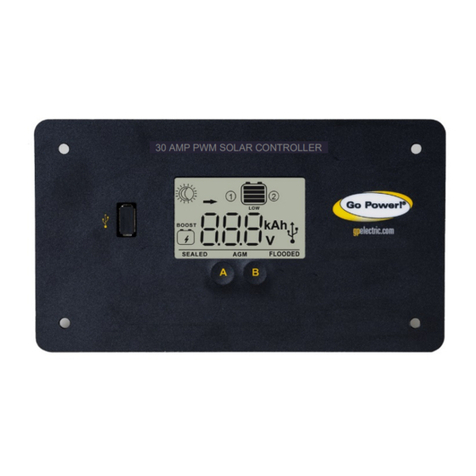
Go Power
Go Power GP-PWM-30-SB User manual
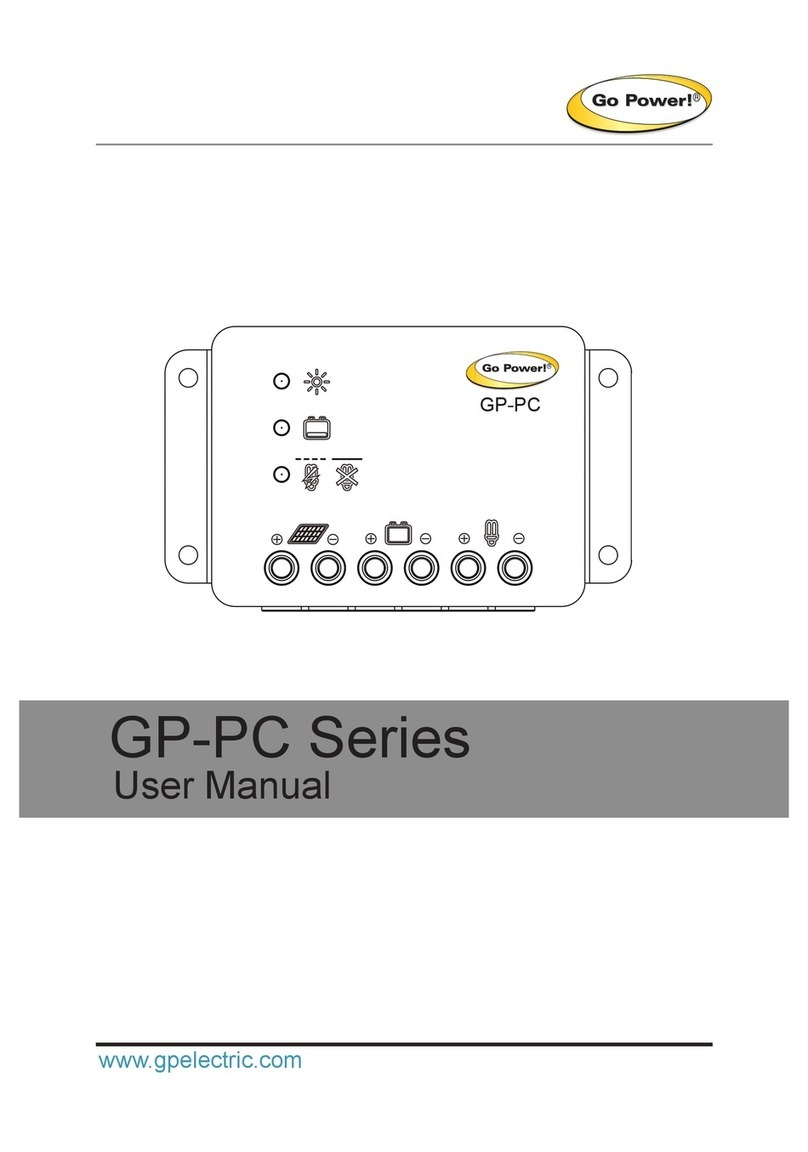
Go Power
Go Power GP-PC Series User manual

Go Power
Go Power MAXIMUM GP-PWM-10 User manual

Go Power
Go Power GP-PWM-30-SB User manual
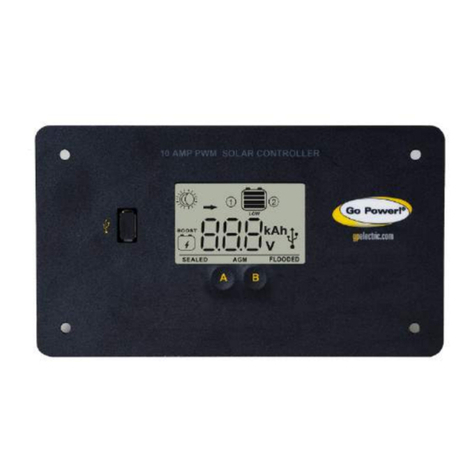
Go Power
Go Power GP-PWM-10-FM User manual
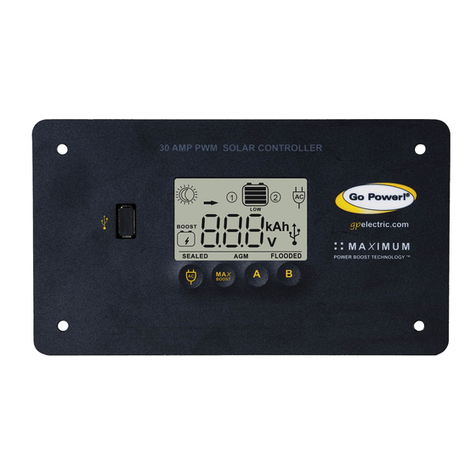
Go Power
Go Power GP-PWM-30-UL User manual
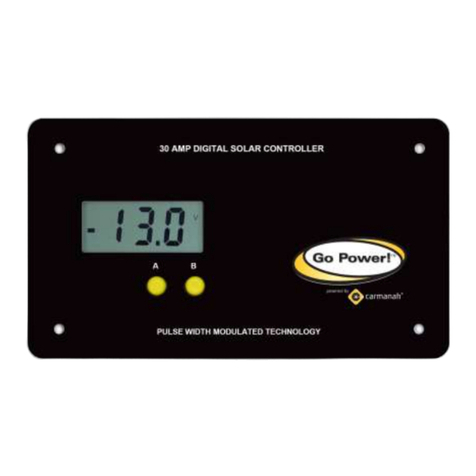
Go Power
Go Power GP-PWM-30 User manual
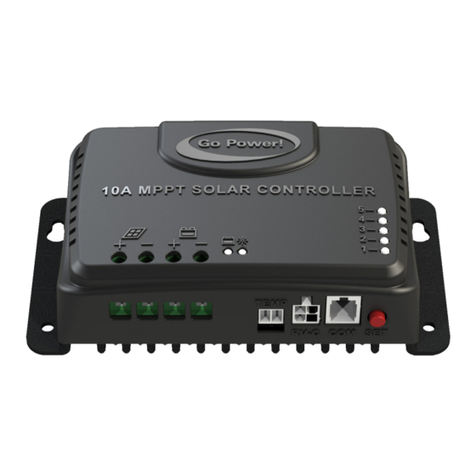
Go Power
Go Power 10 AMP RVC-MPPT User manual
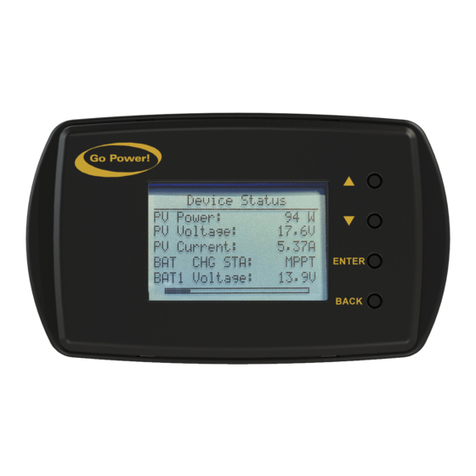
Go Power
Go Power GP-RVC-R User manual
